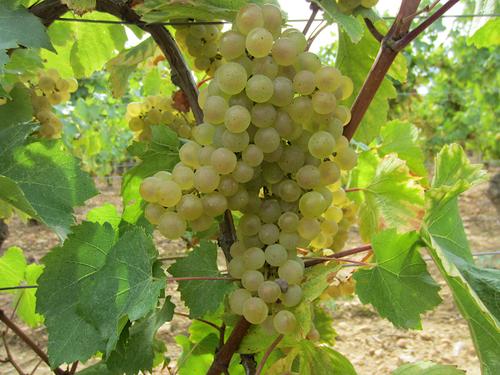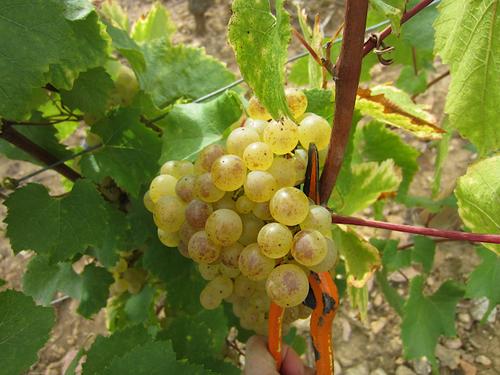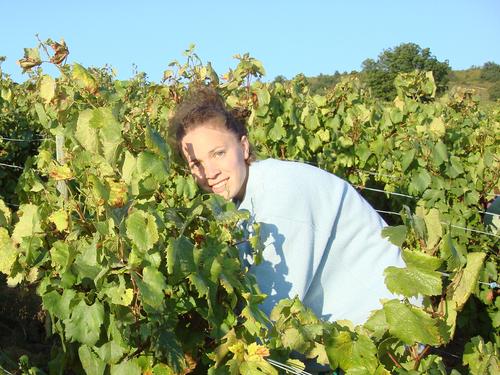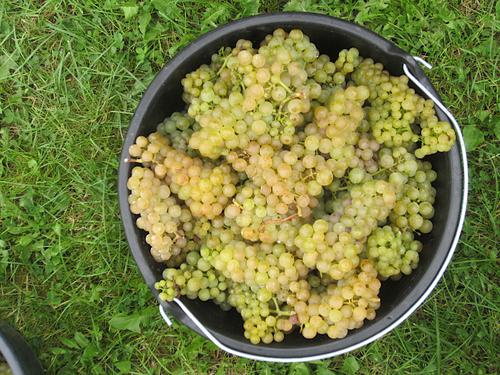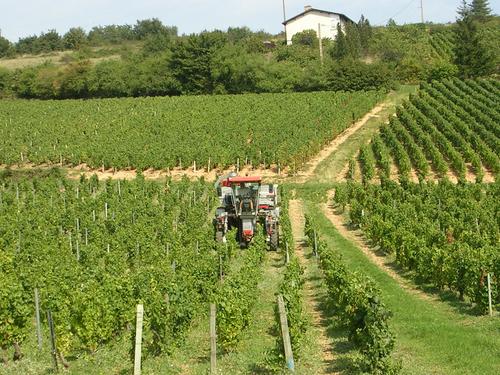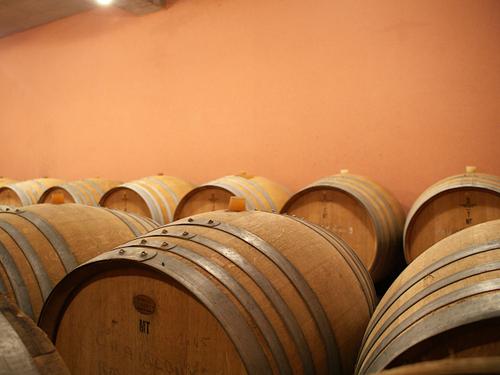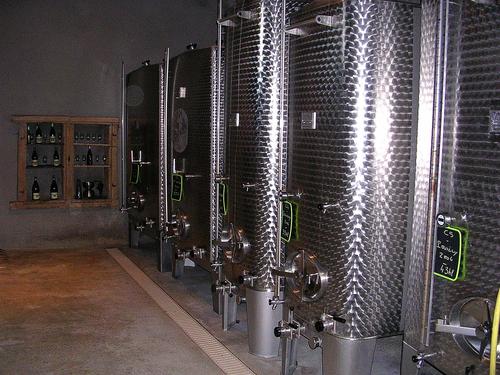Winemaking
It comes as no surprise that grape harvest is a very important stage in the winemaking process, as it directly impacts the quality of the wine. The inception of the harvest is painstakingly deliberated according to the weather, time of day, and physiological maturity of the grapes. The knowledge around the selection of the most appropriate time has been mastered and passed down by the family for generations.
The harvest itself is hard labor, but a festive activity at the same time. Friends and family often gather together during this time to work side by side in the field gathering grapes in areas inaccessible by harvest equipment. As per tradition, each day of the harvest is wrapped up with a nice meal in a great familial atmosphere.
Once the grapes are gathered, they are pressed using a pneumatic wine press. The grape juice (must) is then transferred into large vats where it decants in a cold (4-8°C) setting. The next step is racking (drawing off the juice) to remove coarse lees (the deposit).
Typically, the alcohol content of the wines falls naturally between 12% and 13%, allowing Domaine du Chalet Pouilly to avoid any chaptalization of wines. In order to ensure that the original character of the wines is preserved, every effort is made to avoid yeast addition to the must during the wine-making process. The must, depending on the wine, is either stored in oak barrels or stainless steel tanks where the fermentation begins.
For Saint-Véran and Mâcon-Solutré, the alcoholic fermentation takes place in vats. The thermoregulation allows the must to vinify at a constant temperature of 18°-20°C. The duration of the alcoholic fermentation varies, but generally lasts about a month. Next comes another racking with preservation of the fine lees followed by the start of the second (malolactic) fermentation. Overall, the bottling for these wines is typically done about ten months after the harvest.
For Pouilly-Fuissé Premier Cru, Pouilly-Fuissé, the process is quite different. The must is directly put in barrels of 400, 500, or 900 liters. The alcoholic and malolactic fermentations are done without any intervention. The duration of this phase varies and could last up to several months. Once the fermentation is complete, each barrel is stirred every week in order to keep the lees in suspension. This traditional Burgundy practice allows the wine to become weightier, more complex, and finally to be protected from oxidation by the natural antioxidants present in the lees. The maturing of Pouilly-Fuissé can last between 9 and 10 months, 16 to 20 months for Pouilly-Fuissé Premier Cru, depending on the vintage. Every year we introduce around 15% of new French oak barrels to bring just enough of “oak” to the taste of Pouilly-Fuissé.
